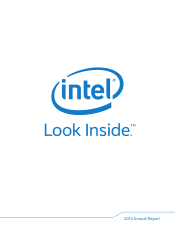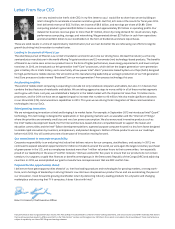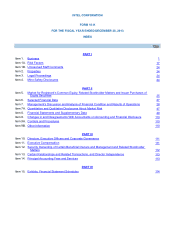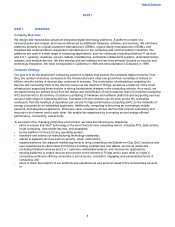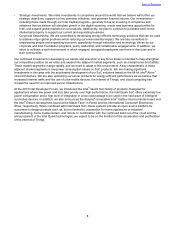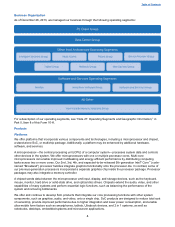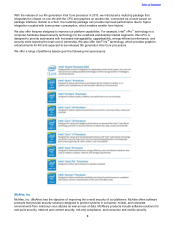Intel 2013 Annual Report Download - page 9
Download and view the complete annual report
Please find page 9 of the 2013 Intel annual report below. You can navigate through the pages in the report by either clicking on the pages listed below, or by using the keyword search tool below to find specific information within the annual report.
4
Business Organization
As of December 28, 2013, we managed our business through the following operating segments:
For a description of our operating segments, see “Note 27: Operating Segments and Geographic Information,” in
Part II, Item 8 of this Form 10-K.
Products
Platforms
We offer platforms that incorporate various components and technologies, including a microprocessor and chipset,
a stand-alone SoC, or multichip package. Additionally, a platform may be enhanced by additional hardware,
software, and services.
A microprocessor—the central processing unit (CPU) of a computer system—processes system data and controls
other devices in the system. We offer microprocessors with one or multiple processor cores. Multi-core
microprocessors can enable improved multitasking and energy-efficient performance by distributing computing
tasks across two or more cores. Our 2nd, 3rd, 4th, and expected-to-be-released 5th generation Intel® Core™ (code-
named "Broadwell") processor families integrate graphics functionality onto the processor die. In contrast, some of
our previous-generation processors incorporated a separate graphics chip inside the processor package. Processor
packages may also integrate a memory controller.
A chipset sends data between the microprocessor and input, display, and storage devices, such as the keyboard,
mouse, monitor, hard drive or solid-state drive, and optical disc drives. Chipsets extend the audio, video, and other
capabilities of many systems and perform essential logic functions, such as balancing the performance of the
system and removing bottlenecks.
We offer and continue to develop SoC products that integrate our core processing functions with other system
components, such as graphics, audio, and video, onto a single chip. SoC products are designed to reduce total cost
of ownership, provide improved performance due to higher integration and lower power consumption, and enable
ultra-mobile form factors such as smartphones, tablets, Ultrabook devices, and 2 in 1 systems, as well as
notebooks, desktops, embedded systems and microserver applications.
Table of Contents

